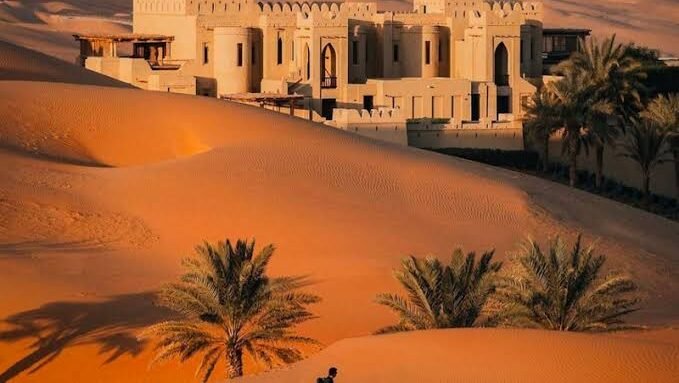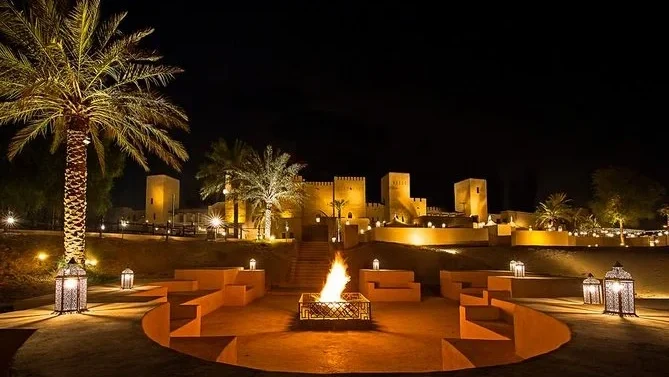The United Arab Emirates (UAE), as we know it today, is a dazzling hub of innovation, luxury, and modernity. However, the UAE’s journey to becoming a global powerhouse is rooted in a rich and fascinating history. Long before the towering skyscrapers of Dubai and the cultural landmarks of Abu Dhabi, the UAE was a land of resilient people who thrived in harsh desert conditions, relying on their traditions, skills, and resourcefulness.
This article takes a deep dive into the “old UAE,” exploring its traditional way of life, economic practices, cultural heritage, and the transformative events that laid the foundation for its modern success.
Life in the Old UAE: The Simplicity of Desert Living
Before the discovery of oil in the 20th century, the UAE’s population led a simple, nomadic lifestyle, shaped by the arid desert environment. The seven emirates—Abu Dhabi, Dubai, Sharjah, Ajman, Umm Al Quwain, Ras Al Khaimah, and Fujairah—were home to Bedouins, fishermen, and pearl divers. Each emirate contributed uniquely to the region’s culture and economy.


Bedouin Lifestyle
The Bedouins, the nomadic tribes of the desert, formed the backbone of traditional Emirati life. They lived in portable tents made from goat hair, which provided protection from the harsh desert climate.
- Survival Skills: The Bedouins relied on their deep knowledge of the desert for survival, using stars for navigation and conserving water for long journeys.
- Camel Culture: Camels, often called the “ships of the desert,” were integral to Bedouin life. They served as transportation, a source of milk, and even a measure of wealth.
Coastal Living: Fishing and Pearl Diving
Communities along the coast, particularly in Dubai, Sharjah, and Abu Dhabi, depended on the sea for their livelihoods. Fishing was a primary source of sustenance, while pearl diving became a significant economic activity.

- Pearl Diving: The UAE’s waters were once rich in natural pearls, and divers would embark on months-long voyages to collect these treasures. Pearls from the Arabian Gulf were highly prized and traded globally.
- Fishing Villages: Simple wooden boats called “dhows” were used for fishing, and these vessels became a symbol of Emirati maritime culture.
The Old Economy: Trade and Pearls
The old UAE was strategically located along major trade routes, making it a hub for commerce. The ports of the UAE connected the Arabian Peninsula with India, Persia, and East Africa, facilitating the exchange of goods such as spices, textiles, and dates.
The Pearling Industry
Pearling was the backbone of the UAE’s economy before the discovery of oil. It employed thousands of people and brought wealth to the region.
- Dhow Expeditions: Pearl divers worked in teams aboard dhows, relying on traditional methods and tools. Divers often used nose clips and weighted ropes to descend into the sea, holding their breath for extended periods.
- Decline of Pearling: The pearling industry declined in the early 20th century due to the introduction of cultured pearls from Japan and the global economic downturn during the Great Depression.
Trade and Souks
Old Emirati towns were home to bustling souks (markets), where traders sold goods from across the world. The souks were not just centers of commerce but also social hubs where people gathered to exchange news and stories.
Cultural Heritage and Traditions
The old UAE was a land of deep cultural traditions, many of which continue to shape the country’s identity today. Emirati culture was rooted in values such as hospitality, generosity, and respect for family and community.
Traditional Clothing
Emirati attire has always been influenced by the climate and Islamic customs.
- Men’s Clothing: Men wore the “kandura” or “dishdasha,” a long white robe, along with the “ghutra,” a traditional headscarf held in place by the “agal.”
- Women’s Clothing: Women wore the “abaya,” a black robe, and often adorned themselves with intricate jewelry and henna designs.
Food and Cuisine
Traditional Emirati cuisine was simple, hearty, and reliant on locally available ingredients.
- Staples: Dates, fish, rice, and camel milk were dietary staples. Dishes like “harees” (a porridge-like dish) and “machbous” (a spiced rice dish) remain popular today.
- Coffee Culture: Serving Arabic coffee, or “gahwa,” was a sign of hospitality and respect. The preparation and serving of coffee followed a ritualistic tradition.
Arts and Music
Emirati culture is rich in oral traditions, poetry, and music.
- Al-Taghrooda: A form of traditional Bedouin poetry often recited during camel rides.
- Al-Ayyala: A traditional dance performed with sticks, symbolizing unity and strength.
- Craftsmanship: Emirati artisans excelled in weaving, pottery, and boat-making, creating items that were both functional and artistic.
Transformation: The Discovery of Oil
The discovery of oil in the 1950s marked a turning point in the UAE’s history. The newfound wealth from oil exports transformed the region from a collection of modest fishing villages and desert communities into a modern, urbanized nation.
Early Oil Discoveries
- Abu Dhabi: Oil was first discovered in Abu Dhabi in 1958, bringing unprecedented wealth and development to the emirate.
- Dubai: Dubai followed suit in the 1960s, using oil revenues to diversify its economy and invest in infrastructure.
Infrastructure Development
Oil wealth allowed the UAE to build roads, schools, hospitals, and modern cities, improving the quality of life for its citizens.
Formation of the UAE
In 1971, the seven emirates united to form the United Arab Emirates under the leadership of Sheikh Zayed bin Sultan Al Nahyan, the founding father of the nation. This unification was instrumental in shaping the country’s political stability and economic success.
Preserving the Past in a Modern Nation
Despite its rapid modernization, the UAE remains deeply connected to its heritage. The government has made significant efforts to preserve the traditions and history of the old UAE.
Heritage Sites
- Al Fahidi Historical District: Located in Dubai, this area preserves the architecture and lifestyle of old Emirati villages.
- Al Ain Oasis: A UNESCO World Heritage Site, it showcases the ancient falaj irrigation system used by Emiratis for centuries.
Festivals and Events
- National Day: Celebrated on December 2nd, National Day honors the UAE’s formation and celebrates its rich heritage.
- Heritage Village: Events like the Heritage Village in Abu Dhabi allow visitors to experience traditional Emirati crafts, food, and music.
Conclusion
The story of the old UAE is one of resilience, tradition, and transformation. It is a tale of how a humble, resourceful people adapted to their environment and leveraged their strategic location to build a thriving society. From the Bedouin camps of the desert to the bustling souks of the coast, the old UAE was a land of vibrant culture and enduring traditions.
Today, while the UAE dazzles the world with its modern achievements, it continues to honor and celebrate its past. The legacy of the old UAE lives on in its culture, festivals, and preservation efforts, serving as a reminder of the journey that transformed a desert land into a beacon of innovation and prosperity.
Do follow Uae stories for more Updates














